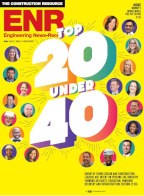
Bill Aalerud
At Columbia, the Massachusetts-based construction management firm where I work as executive vice president, there was a 21-member team that was remarkably high-performing. It was a cohesive and hard-working group with members that delivered exceptional projects, established positive relationships with clients and project partners and, in general, exuded a genuine love for their work and respect for each other.
High-performing teams are a tremendous asset, so wanting to understand the secrets of this group’s success, I called in a consultant who specializes in assessing an attribute called “psychological safety.”
She found that in this particular group, there was a strong culture of teaching and learning, with senior members proactive in mentoring younger colleagues. Also, the team leader was humble, vulnerable and very easy to be with; risk-taking was a team activity and the group shared the consequences of its decisions—whether good or bad. In addition, team members were good listeners and praise was given freely.
The consultant’s results made it clear that these were characteristics of good team psychological safety and that they provided a template for success. “Most people want us to measure their low-performing teams to figure out what’s going wrong,” she later told me. “I was impressed that you wanted us to study the high-performing team and identify what is going right.”
Psychological safety is a term that was popularized by Harvard Business School researcher Amy C. Edmundson, who has devoted her career to understanding the differentiators that make some teams successful while others struggle. She wondered if high-performing teams might be the result of specific personalities in particular roles, but she soon learned that personality type was irrelevant.
The researcher also anticipated that powerhouse teams would make fewer mistakes—but she was surprised to find they actually reported the most! When Edmundson looked closer, she found they did not commit more mistakes, it just seemed that way because these teams never hid them. An important benefit, she saw, was that sharing errors openly provided the team with more learning opportunities.
Reveal mistakes? It seems anathema to the image of high-performance in construction. But the reality is that we all make mistakes, and team members fearful of sharing errors are unlikely to learn what’s needed from them.
Environments in which we don’t feel psychologically secure can make learning difficult because we don’t want to expose a lack of knowledge that might make us appear less competent. I was recently at a team meeting with a client, project partners and subcontractors when a particular acronym was used. As I tried to recall a phrase that might match the acronym, I looked about the room. Everyone else seemed to be following along, so instead of asking what the acronym meant, I chose to hide my confusion. I missed the whole point of the conversation, and lost my chance to contribute!
So how can we bring psychological safety to construction? The team leader has the most influence to create it within a team or work group. That person can be a project executive, department manager, superintendent, project manager or designated leader.
We already know that emotional intelligence is important in business and in the workplace. It can promote group psychological safety when leaders encourage members to own mistakes, ask questions, listen and make sure one or two individuals don’t dominate discussions.
Work with your leaders to ensure that their team members understand that they can share suggestions, concerns or mistakes without risk or worrying if those actions could affect advancement or lower their standing within the group. Team leaders need to reinforce that it’s okay to fail sometimes, and that mistakes are opportunities.
Our firm’s exploration of psychological safety is now a critical part of a planned effort to improve diversity, equity and inclusion in our offices and jobsites after the 2020 murder of George Floyd. We believe DEI and psychological safety will improve performance of our teams, and of our whole company, while helping meet the construction industry’s need to diversify and grow the workforce.
We are now implementing this effort across our firm—and while it’s too early to know the results, I’m optimistic.





